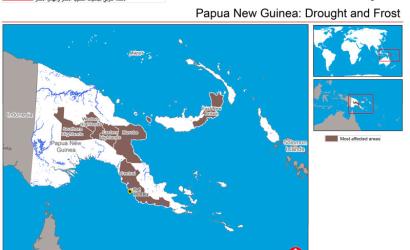Papua New Guinea (PNG)
The Emergency Telecommunications Cluster (ETC) is not activated in Papua New Guinea.
Papua New Guinea occupies the eastern part of the world's second largest island and is prey to volcanic activity, earthquakes and tidal waves. Some 80% of Papua New Guinea's people live in rural areas with few or no facilities of modern life.
According to the United Nations Economic and Social Commission for Asia and the Pacific, with the introduction of competition in mobile services seven years ago, ICT has transformed the economic and development landscape in Papua New Guinea. The country is connected by two submarine cables—the Australia-Papua New Guinea-2 that runs from Sydney to Port Moresby, and the PIPE Pacific Cable-1 that runs the Sydney-Madang (Papua New Guinea)-Guam-USA route. Although submarine fibre-optic cables are Papua New Guinea’s primary international communications link, operators and Internet service providers continue to use satellite technology for redundancy purposes or for communications services in rural areas. Rural telecommunications infrastructure development has been constrained by many factors, including the high cost of implementing and operating in difficult terrain. The Government of Papua New Guinea, through state-owned PNG DataCo Limited, is developing a national broadband network to enhance broadband access, as well as its affordability and quality. A planned 3G mobile network upgrade over the next 12 months could also increase access to mobile and broadband services to around 1 million people in rural areas.
The ETC is focused on preparedness activities in Pacific Island countries under its Pacific Emergency Preparedness and Response (EPR) project, led by WFP.
